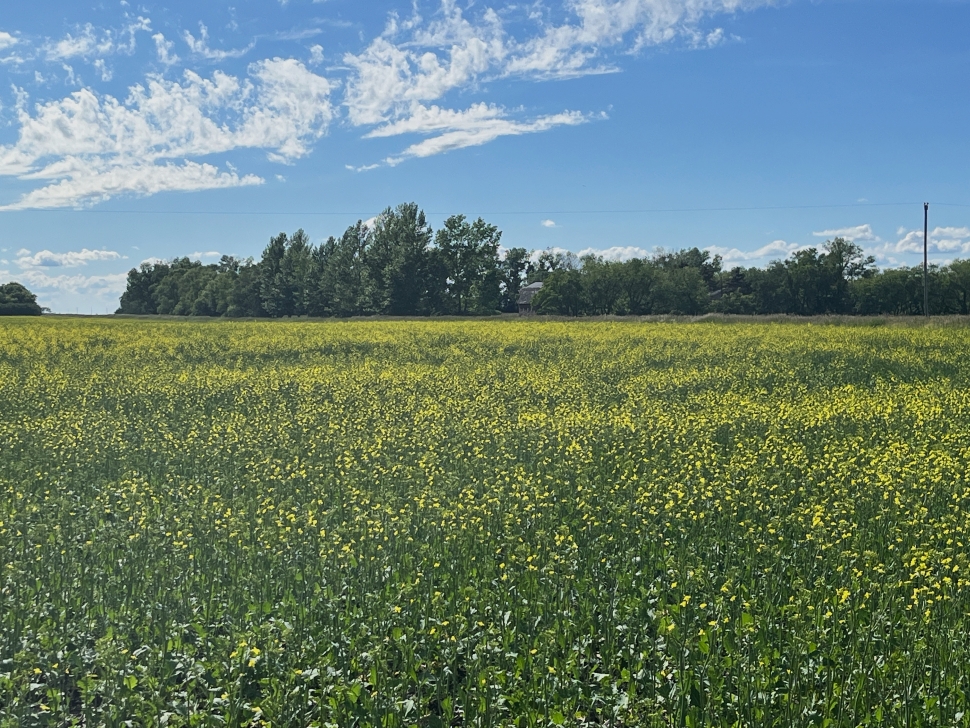While summer is not over yet, a new season is beginning as local farmers prepare for the harvest. However, efforts may be delayed due to the cooler and wetter growing season.
Dale Paslawski, who farms north of Weyburn, says crops are advancing well, but slightly behind in development. He has already begun swathing yellow peas but had to take a break due to the forecasted showers.
“It's been a cooler summer than normal, usually we're in the high 30 [degrees] this time of the year but that still might be coming. A little delayed harvest year for a few guys and there's going to be a very long harvest just because of some of the later seeded crops that went in after the heavy rains we had in May.”
Despite the delay and potentially long season, Paslawski is confident there is no risk of crops not getting off the field in time. He outlines progress he’s observed around the area, including yellow peas being combined near Moose Jaw alongside some winter wheat. He predicts lentils will be taken off area fields soon.
“Lentils desiccating is taking place right now and that crop is going to start to be harvested here in the next week to ten days I would say, if the weather holds and we get some warm dry weather and maybe a little bit of a breeze.”
Canola is likely to be a September harvest according to Paslawski, explaining its currently still flowering. Durum is beginning to change colour now and will likely ripen and begin being harvested in the next seven to ten days.
As for right now, farmers are watching the forecast and preparing their equipment and operations for the fast-approaching busy season.
“We're excited and a lot of farmers are working on machines, I notice farmers including myself getting the combines ready, trucks ready, augers ready, bins ready and getting our ducks in a row.”
The weather is not the only challenge faced by farmers though, as Paslawski says it’s still too early to rule out the possibility of hail or insect damage, and gophers persist in causing problems for producers.
As preparations continue, Paslawski notes some of the safety precautions he takes as hours become longer. Contrary to other operations, he refuses to work late into the night.
“As soon as the sun sets, we usually make a plan to wrap it up for the day just because we're working with rotating equipment and lighting isn't the best. If you’ve got to work on something in the dark, you got to turn all your machines off."
He also monitors fatigue, saying he checks in with those he’s working with to make sure that no one is becoming too tired and losing focus. He also prioritizes employee wellness in general as days become longer.
“12-, 13-, 14-hour days is quite a bit and so you got to hydrate and make sure you have a good meal and get some rest and try to reduce your stress load as much as you can. And keep your verbiage down a little bit, if you know what I mean, and be nice to your employees.”
Harvest safety doesn’t end on the field though, as Paslawski reminds local drivers of the heavy machinery that will be travelling on area roadways soon. He notes factors including operations running later into the night that may have large equipment travelling in the dark, as well as newer farm employees and motorists that may not be as experienced in navigating in and around heavy machinery.
“Everyone has a privilege to use all the roads and the highways but some of the equipment is quite large, and it takes up a lot of room on the highway.”
“We’ve got to use extreme caution on the roads day and night, as motorists and as farmers. I myself don't move any big headers down the road in the dark at all because I'm worried about other people. Road safety is a big concern this time of year.”
